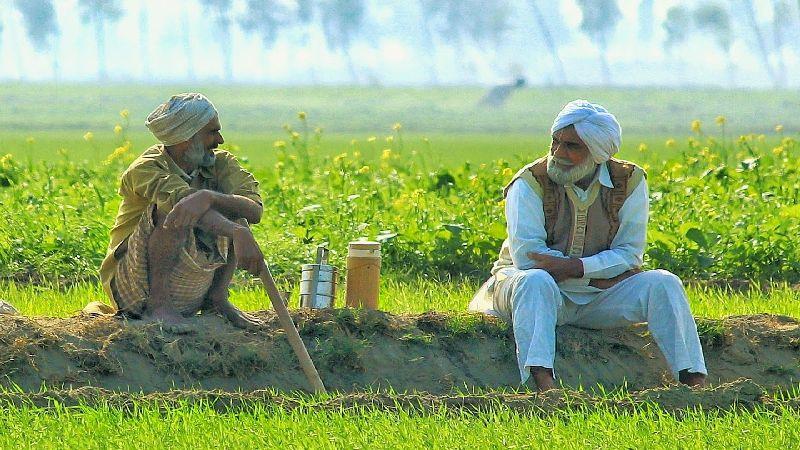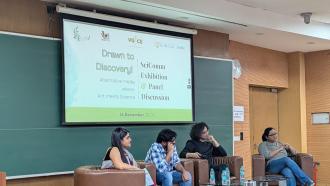
Photo by Darpan Sharma on Unsplash
Wavering weather and unpredictable monsoons due to climate change in the last few decades have destabilised Indian agriculture and put our food security at risk. Although policies that cater to sustainable development have been introduced, only time will show their impact. In the meantime, farmers will have to find ways to cope with the temperamental monsoons to reduce crop failure, while also facing other challenges including poverty, malnutrition, debt and illiteracy.
In a new study, researchers from the Indian Institute of Technology Bombay (IIT Bombay) have explored how farmers adapt to climate change alongside other social and infrastructural hurdles. Their observations can direct government policies so that Indian agriculture is safe from a tumultuous future because of climate variability. The study was published in the Journal of Environmental Management and was supported by IIT Bombay-Centre of Excellence in Climate Studies.
The researchers surveyed farming households from Vidarbha and Marathwada regions of Maharashtra to understand the different strategies they employ to adapt to climate change. In recent years, these areas have suffered the worst monsoon variability in the state and, coupled with poor socio-economic conditions, have seen an increasing number of farmers’ suicides.
“Studying the coping and adaptation practices by considering the multitude of factors under a common framework can guide policies that help farmers overcome the challenges arising out of climate variability and other stressors,” explains Dr Deepika Swami. She is a researcher at the Department of Climate Studies at IIT Bombay and the lead author of the paper.
Adjusting to an uncertain climate needs farming practises to change according to the monsoon and drought periods. The farmers are faced with decisions on adaptation strategies such as sowing multiple crops in a single season to increase productivity, planting drought-resistant crops that can withstand periods of water scarcity, producing crops that mature early, changing the planting and harvesting dates according to the monsoons, availing crop insurance, and changing irrigation practices. But, finding the most suitable strategy needs time, energy, and money from the farmers.
The study found that a host of factors influenced the farmers’ preferences towards different strategies. Farming experience guided farmers to plant drought-resistant crops while education directed them towards planting multiple crops simultaneously. If they had used a government insurance scheme for their crops, they were more likely to plant short duration crops that gave higher profits instead of the lower cost drought-resistant varieties. The assurance offered by the government policy allowed the farmers to select a strategy that not only combated climate change but also provided better income. An understanding of monsoon patterns influenced all three choices.
In contrast, if the farmers possessed a soil health card — which shows the chemical analysis report about the micronutrients present in the soil — they would refrain from changing their crop type. These farmers would follow government directions for cultivating their fields and not take any climate adaptation steps on their own. The study also found that some farmers who had insured their crops were in debt, which suggests that they placed high trust in government policies and took loans to pay for the insurance policy.
However, strategies based on modifying irrigation practices, getting crop insurance and changing planting and harvesting dates were the least prefered among the farmers. Around 60% of the farmers did not use government agricultural schemes. But, educated farmers who had a sound understanding of climate change, better economic conditions and awareness about government schemes did opt for these plans.
“In our study, we saw that farmers who have assets such as TV, mobile and bicycle preferred to change their harvesting dates as they do not bother much about collecting these goods. Instead, they invested their income in increasing crop productivity by changing their planting dates to receive more benefits,” says Dr Swami.
Yet, geographic and climatic variability across India poses unique challenges for designing agricultural policy. For example, the challenges faced by farmers in hilly areas are different from those faced by farmers living on the plains. Variability in monsoons also hits the country in different patterns, with central and south India receiving excessive rainfall while the east and northeast India receive less rain.
The current study further shows that farmers living in different blocks in the same state faced distinct agricultural challenges and have varied requirements for relief. The researchers suggest dividing the country according to climatic zones which face similar challenges even though they belong to other states. “It is true that we cannot draft a policy considering smaller regions such as blocks or villages,” says Dr Swami. “However, we can identify the major challenges for farmers in each climatic zone and provide a suitable solution.”
The researchers suggest that climate change and its effects should be considered in the national and sectoral developmental plans including those related to agriculture and water resources. “District or block-level officials can organise a weekly or monthly seminar in the village where they can show the practical importance of climate change to farmers which will enhance their awareness and actions to deal with its consequences,” opines Dr Swami.






